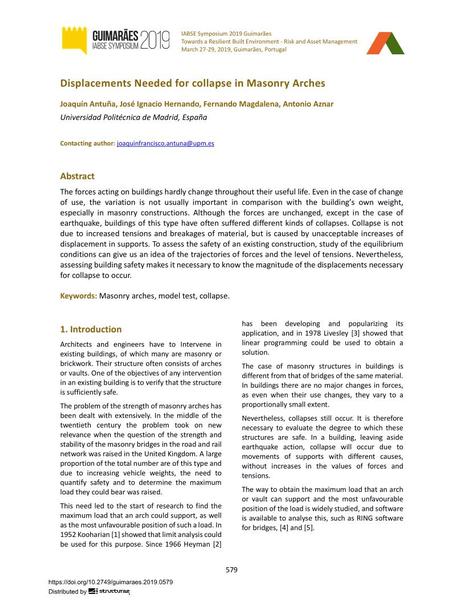Displacements Needed for collapse in Masonry Arches

|
|
|||||||||||
Bibliographic Details
| Author(s): |
Joaquín Antuña
(Universidad Politécnica de Madrid, España)
José Ignacio Hernando (Universidad Politécnica de Madrid, España) Fernando Magdalena (Universidad Politécnica de Madrid, España) Antonio Aznar (Universidad Politécnica de Madrid, España) |
||||
|---|---|---|---|---|---|
| Medium: | conference paper | ||||
| Language(s): | English | ||||
| Conference: | IABSE Symposium: Towards a Resilient Built Environment Risk and Asset Management, Guimarães, Portugal, 27-29 March 2019 | ||||
| Published in: | IABSE Symposium Guimarães 2019 | ||||
|
|||||
| Page(s): | 579-586 | ||||
| Total no. of pages: | 8 | ||||
| DOI: | 10.2749/guimaraes.2019.0579 | ||||
| Abstract: |
The forces acting on buildings hardly change throughout their useful life. Even in the case of change of use, the variation is not usually important in comparison with the building’s own weight, especially in masonry constructions. Although the forces are unchanged, except in the case of earthquake, buildings of this type have often suffered different kinds of collapses. Collapse is not due to increased tensions and breakages of material, but is caused by unacceptable increases of displacement in supports. To assess the safety of an existing construction, study of the equilibrium conditions can give us an idea of the trajectories of forces and the level of tensions. Nevertheless, assessing building safety makes it necessary to know the magnitude of the displacements necessary for collapse to occur. |
||||
| Keywords: |
masonry arches collapse model test
|
||||
